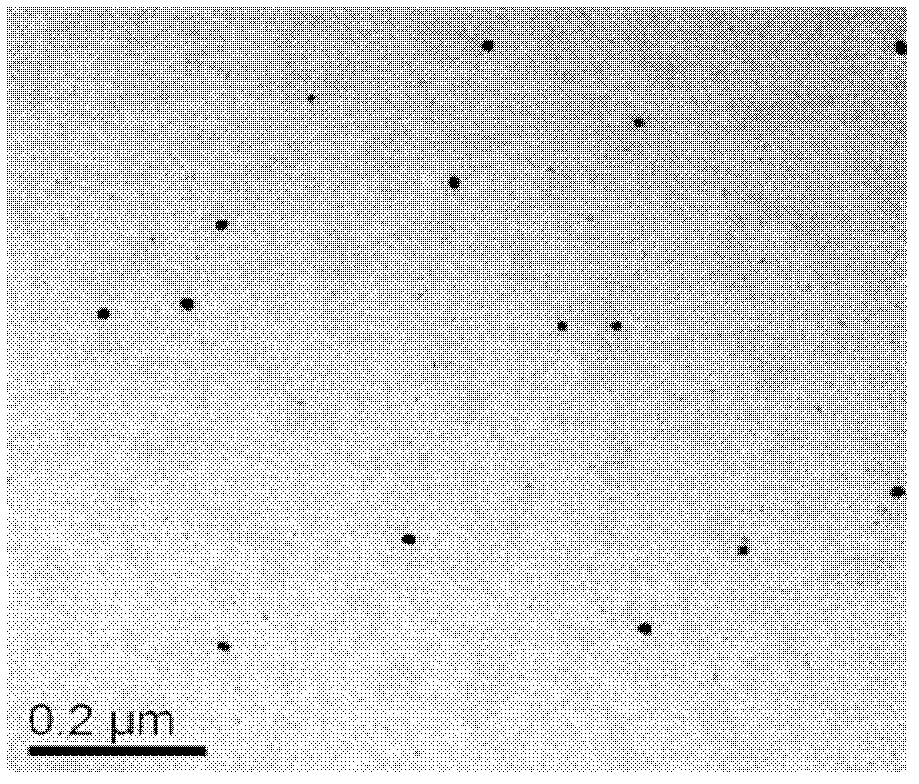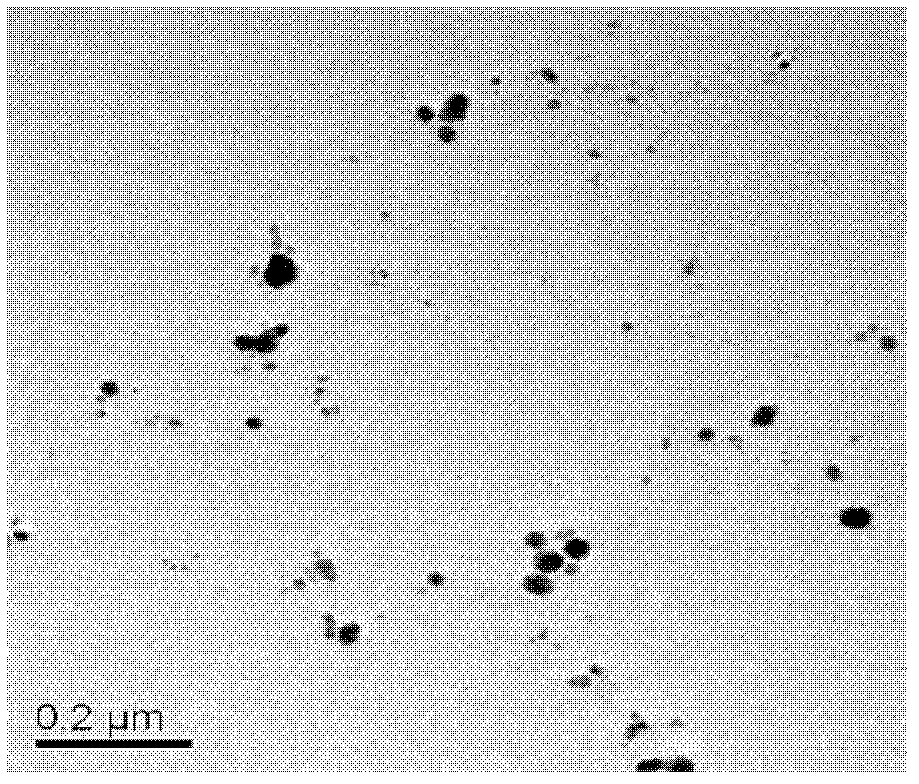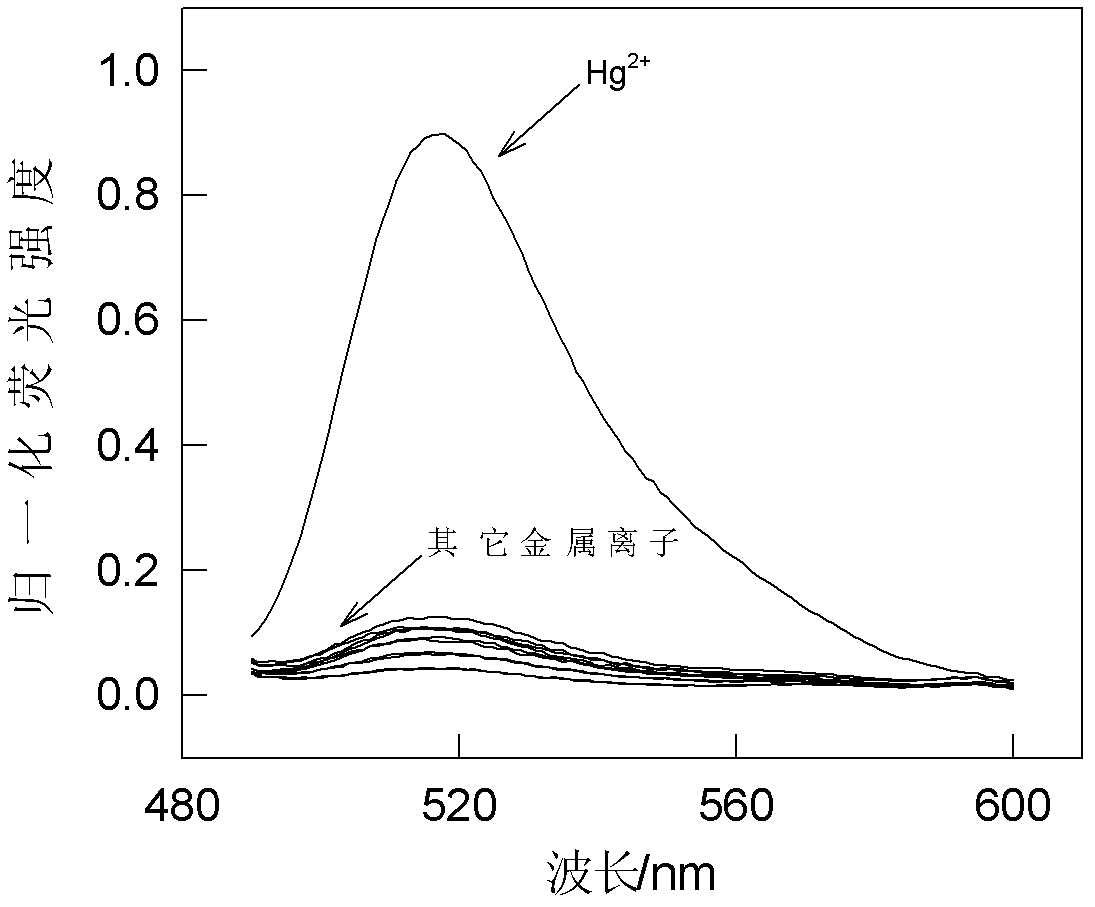Detection method of mercury element
A detection method and element technology, applied in the fields of nanotechnology and analysis and detection, to achieve the effect of simple operation method, good sensitivity and selectivity
- Summary
- Abstract
- Description
- Claims
- Application Information
AI Technical Summary
Problems solved by technology
Method used
Image
Examples
Embodiment 1
[0036] Example 1 prepares silver nanoparticles with DNA as a template:
[0037] Prepare the solution required for the preparation of silver nanoparticles: dilute the DNA stock solution containing 23 bases with water to obtain a 5 μM / L solution, prepare a 1mM / L silver nitrate (AgNO3) solution, and prepare a 10mM / L sodium borohydride (NaBH 4 ) solution, prepare 10mM / L PBS buffer solution (pH=7.4) for use;
[0038] Add 490μL of PBS buffer solution (10mM / L) to a 1.5mL centrifuge tube; add 5μL of the prepared 5μM / L DNA solution and shake well; take 5μL of the prepared 1mM / L silver nitrate solution and add it, shake well , placed for 10 minutes (so that the silver ions can fully interact with the DNA); add 1 μL of 10 mM / L sodium borohydride solution for reduction, and shake the centrifuge tube vigorously. Due to the interaction between the silver ions and the bases on the DNA and then adsorbed to the DNA, silver nanoparticles with DNA as a template were formed, and 5 μL of 1mM / L me...
Embodiment 2
[0040] Embodiment 2 This detection method is to the selective fluorescence experiment of various metal ions:
[0041] Mix the DNA solution (5μM / L) and the silver nitrate solution (1mM / L) containing labeled fluorescein in a ratio of 1:1, shake well, and let it stand for 10 minutes; take PBS buffer solution (10mM / L, pH=7.4 ) 480 μL into the fluorescence pool with a volume of 1 mL; then add 10 μL of the above mixed solution and shake well; add 10 μL of different metal ion solutions (1 mM / L), so that the concentration of various metal ions is 20 μM, shake well, and place for 10 minutes; finally Add 2 μL of sodium borohydride solution (10mM / L) for reduction, shake and place for 20 minutes to allow the reaction to proceed fully. Test and record the fluorescence emission spectra to obtain the effects of adding different metal ions on the fluorescence of fluorescein.
[0042] Fluorescence spectrum analysis: from figure 2 It can be seen from the fluorescence spectrogram that when no ...
Embodiment 3
[0043] Embodiment 3 Various metal ions are to the influence experiment that the silver nanometer that takes DNA as template forms:
[0044] Mix fluorescein-labeled DNA solution (5 μM / L) containing 23 bases (5′-FAM-CCCCTAACCCTAACCCTAACCCC-3′) and silver nitrate solution (1 mM / L) at a ratio of 1:1 Leave it for 10 minutes; take 480 μL of PBS buffer solution (10mM / L, pH=7.4) and add it to an absorption pool with a volume of 1mL; then add 10 μL of the above mixed solution and shake well; add 10 μL of different metal ion solutions (1mM / L), Make the concentration of various metal ions 20μM, shake well, and let it stand for 10 minutes; finally add 2μL of sodium borohydride solution (10mM / L) for reduction, shake it and let it stand for 20 minutes, so that the reaction is fully carried out, test and record its absorption spectrum respectively, and get different Effect of addition of metal ions on the absorption spectrum of silver nanoparticles.
[0045] Absorption Spectrum Analysis: Fr...
PUM
| Property | Measurement | Unit |
|---|---|---|
| Diameter | aaaaa | aaaaa |
Abstract
Description
Claims
Application Information
 Login to View More
Login to View More - R&D
- Intellectual Property
- Life Sciences
- Materials
- Tech Scout
- Unparalleled Data Quality
- Higher Quality Content
- 60% Fewer Hallucinations
Browse by: Latest US Patents, China's latest patents, Technical Efficacy Thesaurus, Application Domain, Technology Topic, Popular Technical Reports.
© 2025 PatSnap. All rights reserved.Legal|Privacy policy|Modern Slavery Act Transparency Statement|Sitemap|About US| Contact US: help@patsnap.com



